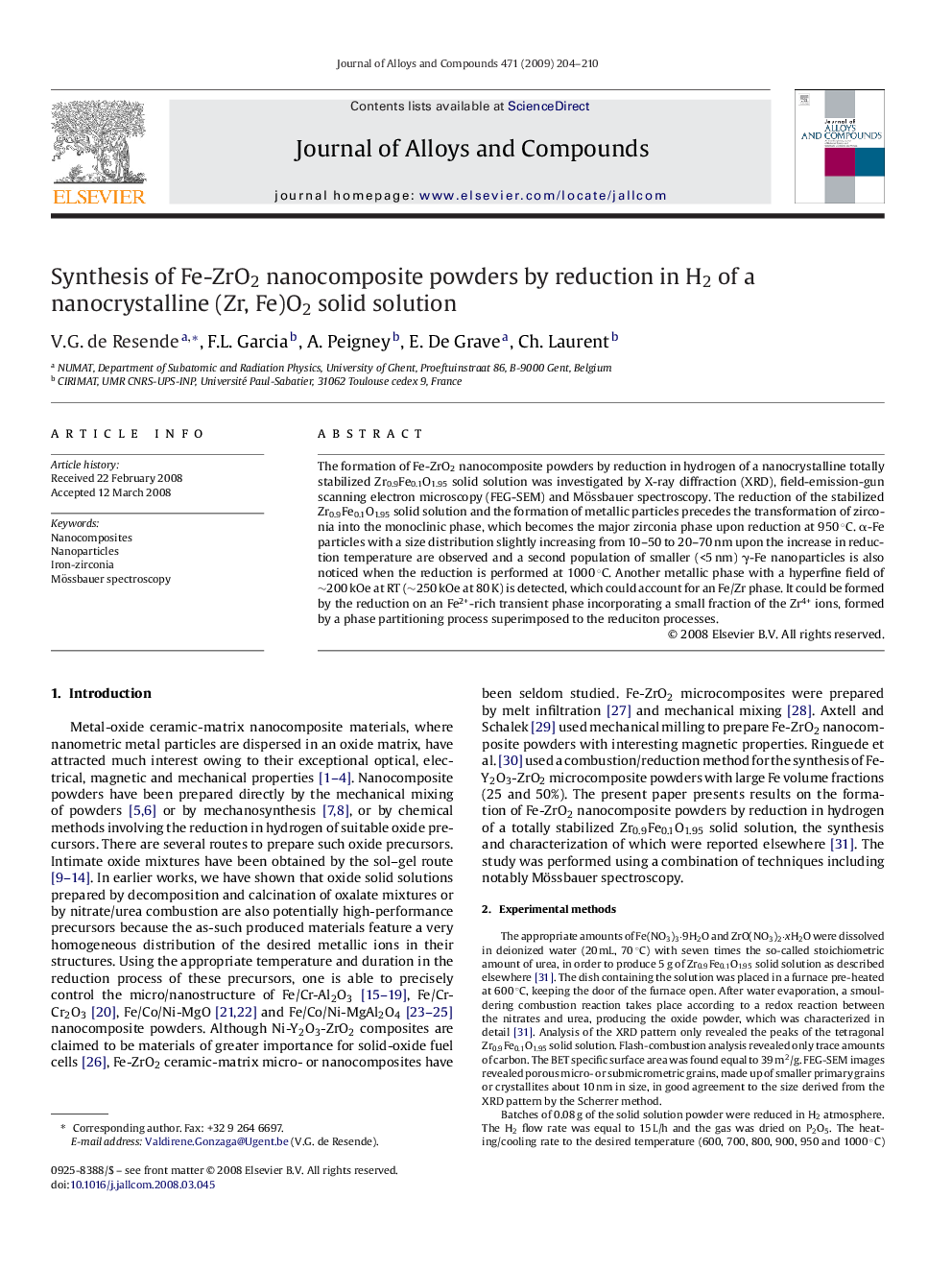| Article ID | Journal | Published Year | Pages | File Type |
|---|---|---|---|---|
| 1623479 | Journal of Alloys and Compounds | 2009 | 7 Pages |
The formation of Fe-ZrO2 nanocomposite powders by reduction in hydrogen of a nanocrystalline totally stabilized Zr0.9Fe0.1O1.95 solid solution was investigated by X-ray diffraction (XRD), field-emission-gun scanning electron microscopy (FEG-SEM) and Mössbauer spectroscopy. The reduction of the stabilized Zr0.9Fe0.1O1.95 solid solution and the formation of metallic particles precedes the transformation of zirconia into the monoclinic phase, which becomes the major zirconia phase upon reduction at 950 °C. α-Fe particles with a size distribution slightly increasing from 10–50 to 20–70 nm upon the increase in reduction temperature are observed and a second population of smaller (<5 nm) γ-Fe nanoparticles is also noticed when the reduction is performed at 1000 °C. Another metallic phase with a hyperfine field of ∼200 kOe at RT (∼250 kOe at 80 K) is detected, which could account for an Fe/Zr phase. It could be formed by the reduction on an Fe2+-rich transient phase incorporating a small fraction of the Zr4+ ions, formed by a phase partitioning process superimposed to the reduciton processes.
